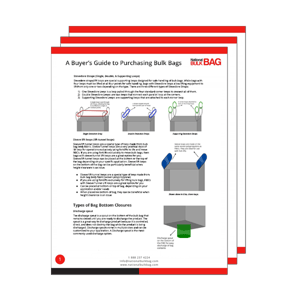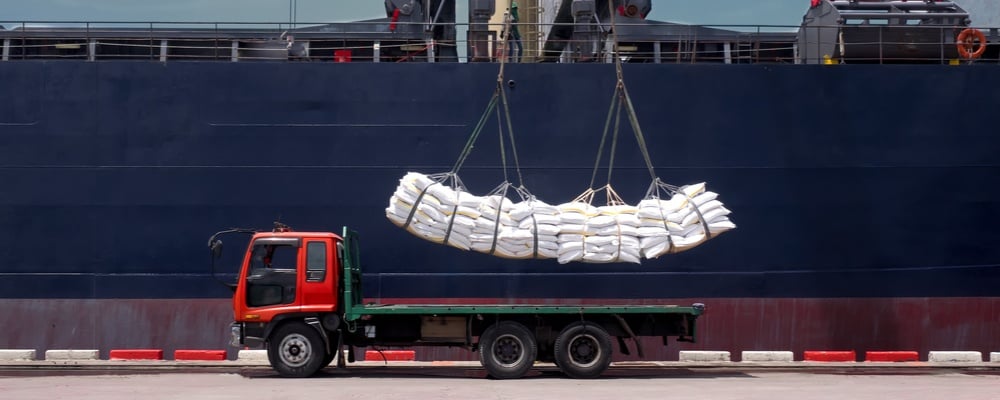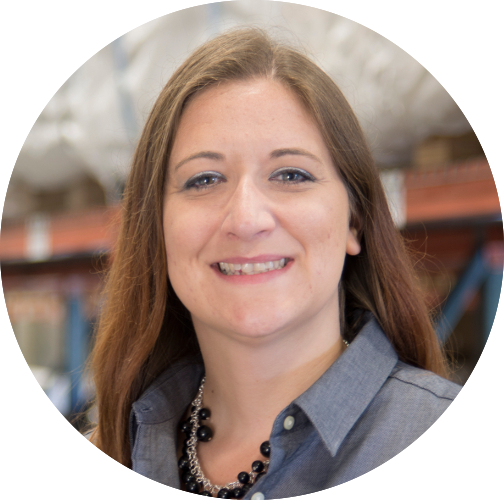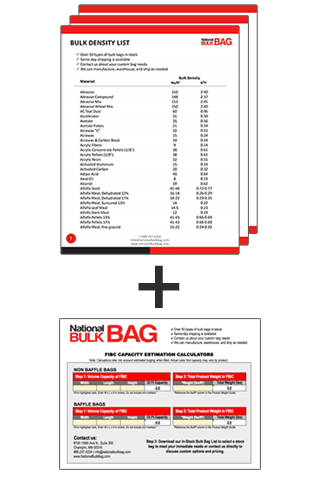We spend a lot of time answering questions from bulk bag buyers with various degrees of knowledge. We get questions ranging anywhere from construction to specific questions about our in-stock bags and the many different applications that they can be used for.
Below are 6 questions that we frequently hear from buyers that are new to using FIBCs OR are just starting to realize how useful they are for transporting/storing their product.
For regular updates, subscribe to our blog by filling out the “Subscribe to our blog updates” form on this page.
1) What is coating or laminate on a bulk bag?
The coating, also referred to as laminate, is an additional polypropylene film that is added to the bag’s fabric, sealing the small gaps in the poly weaves. This film can be added to the inside or outside of the bag.
Coating/laminate can also act as a moisture barrier. For some uses a poly liner is a better choice to protect the contents. Neither coating nor a liner will make the bag 100% waterproof.
2) How much product can a bulk bag hold?
Jumbo bags are manufactured to have a Safe Working Load (SWL) of anywhere from 1,000 to 4,000 lbs. Some specialty bags are manufactured to hold up to 5,000 lbs., but these bags are uncommon and hard to find.
3) Are bulk bags recyclable?
FIBCs are made from 100% polypropylene and can be recycled. There is one caveat to recycling bags; Most recyclers only collect in large quantities. Recycling is usually only feasible for businesses that use large quantitates of bags or can store used bags over time.
For more information on recycling, check out our blog post “Reuse and Recycle Guidelines for Bulk Bags” by clicking here.
4) Can FIBCs be reused?
Bags can be reused under certain conditions. The bag MUST be designed and rated for multiple uses. In order to reuse bags, they must have a safety factor ratio (SFR) of 6:1. For more information on reusing bags, be sure to read our blog post “Bulk Bag Safety: 5:1 vs. 6:1” by clicking here.
5) What does 5:1 and 6:1 SF mean?
Most woven polypropylene bags are manufactured for one use/one trip. These single use bags are rated at a 5:1 safety factor ratio (SFR) which means that they can hold up to five times the amount of their rated safe working load (SWL). However, for safety reasons, we do not recommend filling a bag over its safe working load.
Some woven polypropylene FIBCs are specifically manufactured for multipole uses. These multiple use/multiple trip bags are rated at a 6:1 safety factor ratio, which means they can hold up to six times their safe working load. Again, for safety reasons, we do not recommend filling a bag over its safe working load.
For more information on 5:1 and 6:1 SF bags, check out our blog post “Bulk Bag Safety: 5:1 vs. 6:1” by clicking here.
6) What is the difference between U-Panel, Circular, & 4-Panel bulk bags?
U-panel bags are constructed with three body panels – one that runs the full length of the bag forming the bottom and two sides and two additional pieces of fabric sewn into the larger piece that form the other two sides. Similar to other construction types, the U-panel bags will maintain a square shape when filled, especially a U-panel bag with baffles. U-panel bags are an industry standard and the most popular type of construction offering high safe working loads (SWLs) and solid durability.
Circular bags are made with a tubular piece of fabric that forms all sides of the bag allowing for stitching only for the top and bottom of the bag. Although the fabric is tubular, when filled, the circular baffle bag will still resemble a square bag. There is a common misconception with circular bags regarding their shape when filled. They aren’t literally circular; they are simply constructed with a single piece of fabric that forms all four sides of the bag. While they still resemble square/rectangular bags, they will hold that shape the least of the construction types when filled.
4-panel bags are constructed with four individual pieces sewn together to form a square structure. When filled, a 4-panel bag will hold its square shape similar to other construction types. Typically, 4-panel bags will hold their shape better than the U-panel bags, and U-panel bags will hold their shape better than a circular bag. The biggest drawback to 4-panel bags is the large amount of stitching required to keep the bag together. This can allow for more areas of the bag prone to failure. However, 4-panel bags are ideal for storage due to the way they hold their shape when filled.
For more information on the differences between these, be sure to read our blog post “Types of Jumbo Bag Construction (U-Panel, Circular, 4-Panel)” by clicking here.
Thanks for reading!
 It's our mission to make your bag buying experience easy, informative, and enjoyable. We also want to share our knowledge with you, so you can make the best purchasing decision for the company you represent. Our Buyer's Guide to Purchasing Bulk Bags includes critical information ranging from types of FIBCs to important safety information about handling and transportation.
It's our mission to make your bag buying experience easy, informative, and enjoyable. We also want to share our knowledge with you, so you can make the best purchasing decision for the company you represent. Our Buyer's Guide to Purchasing Bulk Bags includes critical information ranging from types of FIBCs to important safety information about handling and transportation.
Download the guide by clicking below. By downloading, you'll learn all about:
- Types of bags
- Coated vs. uncoated
- FIBC liners
- Bags with baffles
- Types of lift loops
- 5:1 & 6:1 safety guidelines
- Much more!
Click the button below to download our comprehensive buyer's guide.







